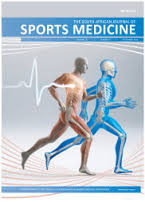Physical fitness and nutritional anthropometric status of children from disadvantaged communities in the Nelson Mandela Bay region
DOI:
https://doi.org/10.17159/2078-516X/2020/v32i1a8158Abstract
Background: Information about the relationships between physical fitness, body composition and nutrition has increased in recent years; however, little is known about physical fitness and the coexistence of under-/overnutrition among children living in disadvantaged areas.
Objectives: To determine the physical fitness status and its association with body composition, growth and selected socio- demographics in primary schoolchildren from disadvantaged communities in the Nelson Mandela Bay region.
Methods: Nine hundred and sixty-five children (49% girls, M=9.5 years) participated in this cross-sectional study. Height and weight were measured to establish body mass index, and height-for-age z-scores. Physical fitness was assessed using tests from the Eurofit Physical Fitness test battery (flexibility, upper/lower body muscular strength and cardiorespiratory fitness). Between- group differences and cross-sectional associations were examined with univariate (Chi2-tests, analyses of variance) and multivariate methods (mixed linear/logistic regression).
Results: Most children had normal weight (76.7%), while 4.5% were underweight and 18.7% were overweight/obese. Underweight children and children with stunted growth (11.5%) had lower average upper body strength (p<0.001). Overweight/obese children had lower scores in weight-bearing activities (p<0.001). Children with higher socio-economic status were more likely to be overweight and obese (p<0.001). In the multivariate analyses, sex, age, body mass index, and stunting were associated with children’s physical fitness.
Conclusion: Fitness assessments seem to be a relevant measure of the current health status of children in disadvantaged settings. Compared to international norms, the children in this study had relatively low scores for both upper- and lower body muscular strength. Therefore, effective school-based intervention programmes should be developed to improve children’s physical fitness in disadvantaged schools.
Downloads
Downloads
Published
Issue
Section
License
The South African Journal of Sports Medicine reserves copyright of the material published. The work is licensed under a Creative Commons Attribution 4.0 (CC BY 4.0) International License. Material submitted for publication in the South African Journal of Sports Medicine is accepted provided it has not been published elsewhere. The South African Journal of Sports Medicine does not hold itself responsible for statements made by the authors.
How to Cite
- Abstract 891
- PDF 562





.png)